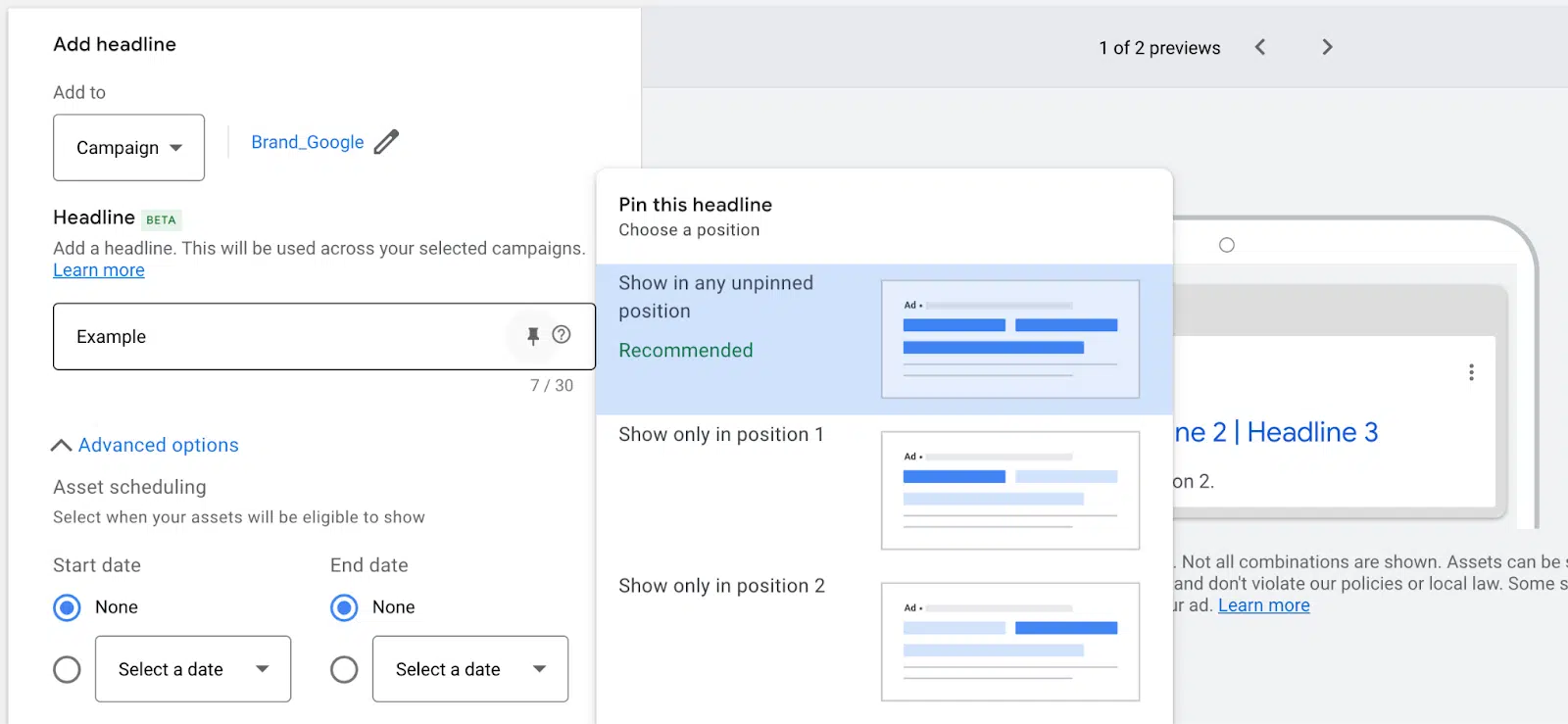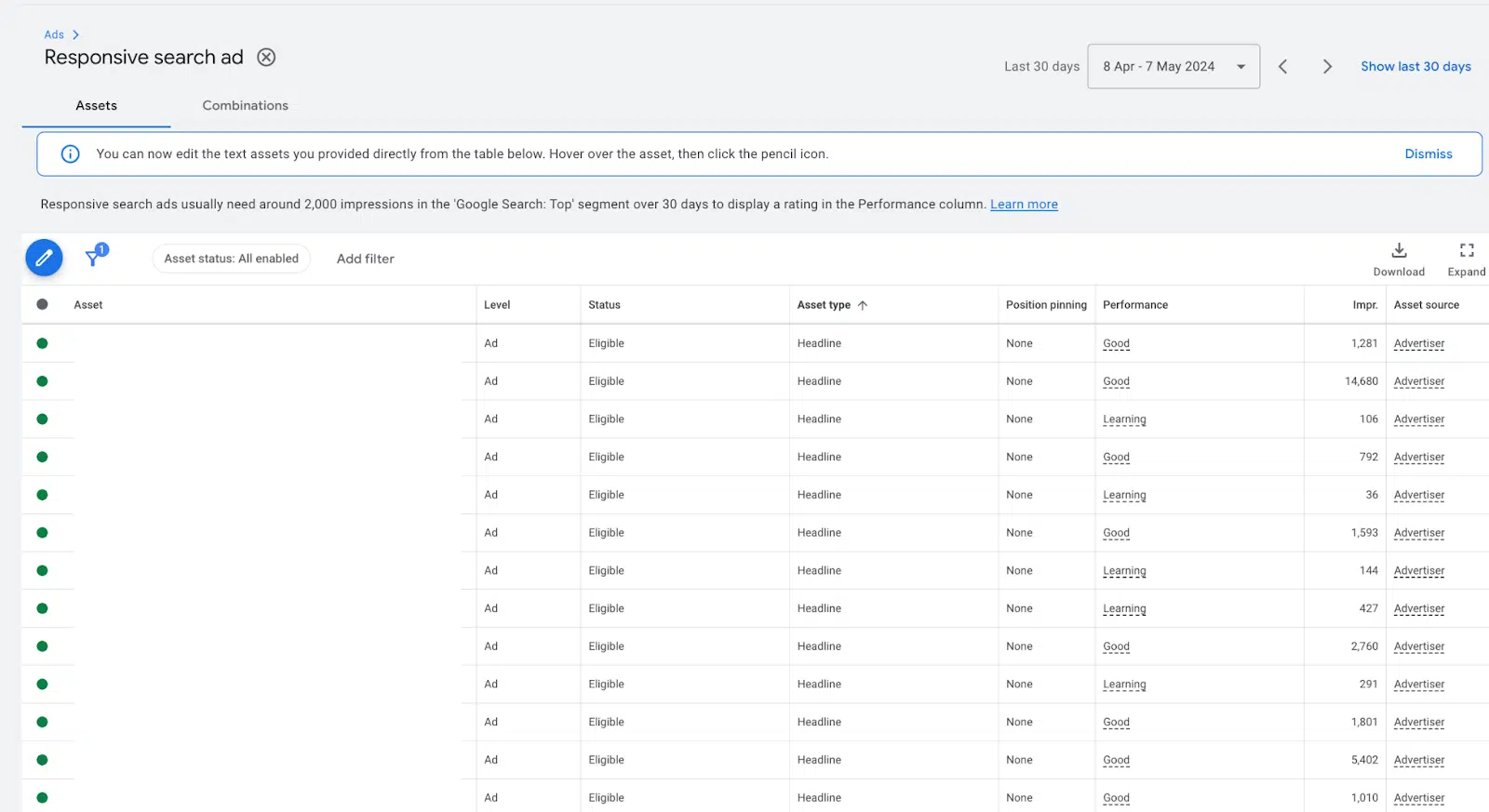Google RSAs in 2024: Everything you need to know
The latest updates and best practices for Google responsive search ads, from single-headline ads to campaign-level assets.
Responsive search ads (RSAs) are the bread and butter of Google Ads search campaigns. Launched in 2018 and originally a beta ad format, RSAs became the default ad format for search campaigns on June 30, 2022, when Google sunsetted Expanded Text Ads (ETAs).
The magic behind RSAs is that by providing multiple headlines and descriptions, Google Ads will test different combinations and determine which combinations work best. These combinations are also tailored to better match the search term of the individual searcher, providing ad content flexibility and improving relevancy.
Most PPC advertisers have transitioned away from using ETAs, and RSAs have become standard practice. However, there have been updates to RSAs you must be aware of. Here’s a rundown of everything you should know about RSAs in 2024.
3 headlines and 2 descriptions: A thing of the past
The concept of your RSAs displaying three headlines and two descriptions has gone out the window, with Google Ads recently shaking up how RSAs can appear in search results.
Single-headline ads are popping up more frequently in search results, and the system sometimes chooses to add a headline and the beginning of the description line.
What assets appear and where are based on whether or not the system predicts that performance will be improved by moving away from the “original” three headlines and two description format.

This takes more control away from the advertiser, as how RSAs appear can never be guaranteed. The responsive nature of this ad format means you don’t control which combinations are shown either.
As such, make sure your ads are coherent in any order and with any number of headlines and descriptions. For example, a sentence should not need to be covered over two descriptions, which would mean that both would need to appear and in the right order for it to make sense.
Dig deeper: Craft winning paid search ads: 4 best practices
Ad strength: The great debate
Ad strength is a diagnostic tool for advertisers to see how their RSA scores in terms of relevance, diversity of assets and quality. It can be found either by adding the Ad Strength column to your ads page, or in a blue box at the top of the box when creating or editing a RSA.

Ad strength provides a score (either Incomplete, Poor, Average, Good or Excellent); the higher the score, the more likely the system thinks the ad will be effective.
Google also provides recommendations and ideas on optimizing your ads to improve the score, such as including popular keywords and adding additional headlines.
After much online discussion, in April 2024, Google’s Ginny Marvin confirmed that Ad Strength is not used by Ad Rank, meaning that a low-scoring ad could still perform well. This was following concerns that a low Ad Strength would impact Ad Rank and, therefore, reduce visibility.
While Ad strength is not used for Ad Rank, improving the relevance and diversity of assets facilitates more combination creations, which opens up the opportunity to show more relevant ads in more auctions.
To pin or not to pin
There’s been an ongoing debate about whether pinning headlines and descriptions helps or hurts RSA performance. Case studies offer differing opinions, with some saying pinning boosts performance, while others report decreased visibility and CTR when they try it.
However, the general consensus is that pinning can impact the system’s ability to create effective asset combinations. The system is being instructed to put certain assets in certain positions, reducing its flexibility and responsiveness. Remember to pin sparingly and strategically whenever possible.
Advertisers might choose to pin assets despite the limitations it imposes because they want their company name in every ad, need to include a legal disclaimer or have strong historical data showing that an asset performs well for the account.
Campaign-level RSA assets
Another update from the beginning of 2024 is the ability to apply up to three headlines and two descriptions at a campaign level. This means these assets will be eligible to appear in any RSA within that campaign.

You can also pin these assets in certain positions and give them a start and end date, making them perfect for promotional periods or seasonal content.
Asset and combination performance report
While sadly not as thorough as most advertisers would like them to be, there are performance reports available for both individual assets and combinations.
To locate them, go to Campaigns > Ads > View asset details (Please note these instructions are based on the new interface design.)
Under the Assets section, you can find information including:
- How many impressions an asset has had during the set time.
- A Performance column, which compares how the asset performs compared to others of the same type within that ad group and rates it either Low, Good or Best.
If the rating is Learning, then that means that it still needs to receive more impressions to be ranked, usually around the 2,000-impression mark.
This report can help you identify which assets need to be improved or replaced based on your impression performance.

Under the Combinations section, you can see what types of asset combinations have been created and how many Impressions they have had.
This is a great opportunity to check your assets, as it allows you to see how they may be appearing in searches — and sometimes, the results can be unexpected.
Google Ads RSAs: The latest updates and best practices
While the foundation of responsive search ads hasn’t changed since they were launched, there have been plenty of developments in the background regarding reporting and best practices.
As Google Ads continues to emphasize the importance of AI-powered search, it will be interesting to see what the next few years will hold for search ads.
Dig deeper: 7 ways to elevate your responsive search ads
Opinions expressed in this article are those of the guest author and not necessarily Search Engine Land. Staff authors are listed here.
Related stories